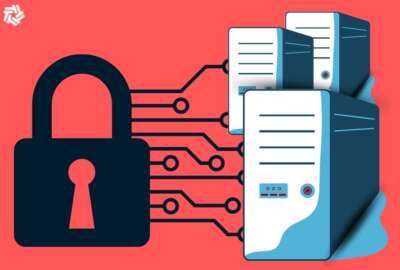Deputy Census director: 2020 count ‘only part’ of agency’s vast data trove
Ron Jarmin, the Census Bureau's deputy director, said the agency looks to build a set of digital tools to help the private sector and the public make better use of...
The Census Bureau is looking to give its data-users more actionable data on everything from a city’s median income to the walkability of certain neighborhoods.
Ron Jarmin, the agency’s deputy director, said Wednesday the agency looks to build a set of digital tools to help the private sector and the public make better use of the agency’s treasure trove of data.
“The decennial census is only part of the story at the Census Bureau,” Jarmin said during a keynote address at the Esri Federal GIS Conference in Washington. “We only do the decennial once a decade [and] it only has a small number of questions on it. Most of the data that people use comes from all of the other data collection platforms that we have.”
Through two recent projects, the agency has built a platform where users can pull together data from several of the agency’s statistical surveys.
The Census Business Builder aims to help small businesses and entrepreneurs gain a better understanding of their customers through American Community Survey and the Economic Census data.
“This is the kind of information that a small-business owner can query to learn about their customers, about their suppliers and about their competitors in a way that allows them to make smart decisions,” Jarmin said.
The Census Bureau’s other venture, the Opportunity Project, pairs clients focused on particular issues — such as combating veteran homelessness — with agency experts to help them navigate the data.
“We bring them in, we sit them down with data subject-matter experts who know the data that’s relevant to their issue, and with developers who use user-centered design principles to build digital tools that bring the data to the decision-maker,” Jarmin said.
In a recent partnership, the Census Bureau worked with the real-estate listings company RedFin to describe the walkability of neighborhoods using agency data.
“What we need to be able to do is to find ways that our data can be integrated with other data — whether it’s data that cities or other local governments have or whether it’s data that the corporate sector maintains,” Jarmin said in an interview following his presentation. “We can bring these data together to drive real decision-making and add a lot of value.”
Shutdown aftermath
During the 35-day partial government shutdown, the Census Bureau continued its decennial count operations with carry-over funding from the previous year, but furloughed employees were working on the American Community Survey and the Economic Survey, and stopped work on monthly economic indicators on everything from trade, construction and retail.
“We’ve been able to get most of that back up and running,” Jarmin said in the interview. “We’re assessing where we are on data collection so that we can get critical economic and demographic statistics back out to folks as quickly as we can.”
In the days following the shutdown, Census employees have worked with their colleagues at the Bureau of Economic Analysis, also based within the Commerce Department, to make sure Census can provide them with the numbers they need to catch up on quarterly gross domestic product numbers.
Improving Census field operations
While the 2020 decennial count marks the first time households can respond online or over the phone, technology improvements have also impacted the agency’s ground game.
Preparing for the 2020 count, Census partnered with state, local and tribal governments to verify more than 106 million addresses. The agency also partnered with the Postal Service to keep track of more than 500,000 new addresses each year.
That’s a significant change from the 2010 count, when about 150,000 temporary employees walked every block in the United States to verify the Census Bureau’s address list.
“This decade, we’re still conducting a 100 percent review, but most of the work is occurring in the office,” said Deirdre Bishop, the chief of the Census Bureau’s geography division.
The agency also has 100 technicians using the Block Assessment Research and Classification Application (BARCA), which compares satellite imagery from 2009 and the present to track new addresses.
John Pollicino, an agency geographer who leads the in-office address review, said what used to take two hours in the field now only takes two minutes in the office.
“It took me a lot longer to talk about this block than it did to actually work it,” Pollicino said during a demonstration of the BARCA program.
Based on work from its 2018 field test in Providence County, Rhode Island, the Census Bureau expects a 60 percent self-response rate to the 2020 count.
For the 40 percent of households that will require a follow-up response, enumerators in 2020 will knock on doors using a custom iPhone app to record and transmit decennial count responses. Enumerators will also use the app to submit timecards, to update the hours they’re available to work, and to receive assignments.
By making “every step in the process mobile-enabled,” Census IT manager Anika Adams-Reefer said the agency has reduced its need for enumerators by about a third.
New challenges to face
An internet-connected decennial count also presents new challenges for the Census Bureau.
Last October, during a quarterly performance management review at the agency’s headquarters, Simson Garfinkle, a senior computer scientist for confidentiality and data access at the Census, warned that advances in computing power have made it easier for adversaries to unscramble the aggregated data the agency releases to the public.
Under Title 13 of the U.S. Code, the Census Bureau can only use its information for statistical purposes only, and can’t share personally identifiable information with other agencies or outside groups.
“We take the responsibility very seriously, so we need to explore ways that we can provide very rich, detailed data that still protects the privacy of the underlying respondents,” Jarmin said during the interview.
The Census Bureau has partnered with the Department of Homeland Security and the intelligence community on cybersecurity, but Jarmin added that the agency must also guard against the threat of a disinformation campaign.
“Much like elections, people that want to sow discord in our country might try to mess with the census, so this is a new challenge that we have to face,” he said.
Copyright © 2025 Federal News Network. All rights reserved. This website is not intended for users located within the European Economic Area.
Jory Heckman is a reporter at Federal News Network covering U.S. Postal Service, IRS, big data and technology issues.
Follow @jheckmanWFED






